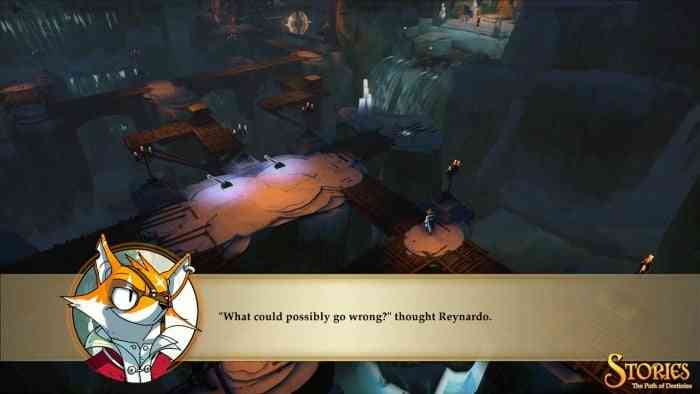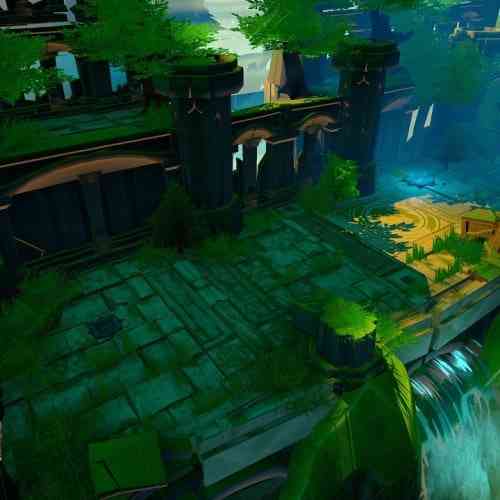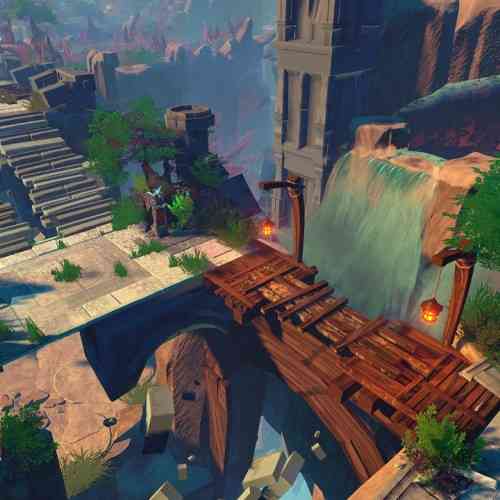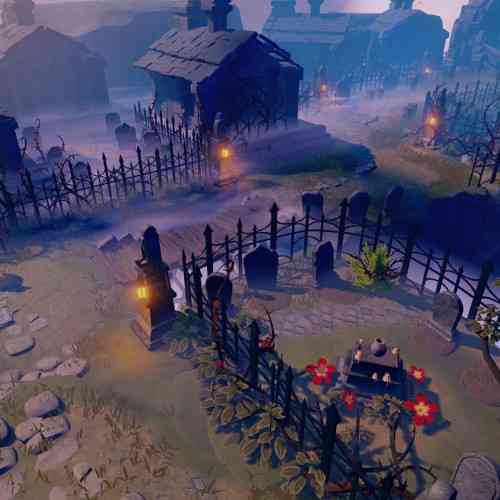I remember as a kid reading the Choose Your Own Adventure books where the heroes would reach a pivot moment in the story, and it would be up to you the reader to determine their fate. Sometimes you’d choose poorly and they would walk into a trap, meeting their untimely end. Stories: The Path of Destinies is the video game version of those books; many ways to die, only one way to come out on top.
Stories (shortened for brevities sake), is the tale of Reynardo a noble sky pirate fox caught up in the battle between a band of scrappy rebels and an evil emperor. Along the many branching story lines he’ll come across old friends needing rescuing, mystical weapons, wise sages, an old flame and powerful weapons hidden for centuries. It’s up to the player to guide Reynardo as to which choices are more important, ultimately leading to his fate, or in the game’s case a likely death. It’s only through making these mistakes will Reynardo learn of critical information that will help guide the next play through and lead to a more positive outcome.
______________________________
“It won’t take an average gamer long to unlock all of Reynardo’s weaponry or max out his abilities to the point where Reynardo drastically overpowers his enemies.”
The game plays out across a dozen or so environments from a top down perspective. The beautifully stylized environments add a nice touch to the overall feeling of the gameplay, which is solidified by the omnipotent narrator who voices the entire game, including the characters themselves, adding unique inflections and tones for each of the cast. It really does feel like you’re playing through something like a children’s book.
Stories is designed as an Action RPG, so players will be leading Reynardo through fast paced combat situations with a variety of hack and slash skills to guide you. As the game progresses, Reynardo will unlock new abilities, weaponry and stat boosting gems. While this is a welcome addition to gameplay, it realistically is a very shallow element. It won’t take an average gamer long to unlock all of Reynardo’s weaponry or max out his abilities to the point where Reynardo drastically overpowers his enemies. A certain skill set is nearly game breaking, making it possible to kill even the hardest of enemies in a single blow.
This problem translates over to the main element of the gameplay as well, the branching story lines. After about three start-to-finish playthroughs, I had seen every level design and knew most of the story options available to me. By my fourth and fifth playthrough, I had acquired all the loot available in the game and opened all the secret pathways. However, since I had not yet found the “true” ending, I was forced to slog through the same levels without any incentive for further exploration or combat. I found myself burning through levels as quick as possible just to get through the storyline. It only took me six tries to get the “true” ending.
______________________________
“It’s like that easy beach reading book that you enjoyed for a few hours on holiday, and then put back on the shelf never to read again.”
Normally this wouldn’t be an issue. Had the developers billed the game as a shorter experience, where six playthroughs was enough to cover most ground, I’d be satisfied. But, there is 22 hours’ worth of story content with 32 unique endings; however there is only about 6 to 8 hours of gameplay content, and I had zero incentive to cover the same ground over and over again just to see a slight variation on an ending I’d already reached.
Overall, the first few hours of Stories is an enjoyable experience. Reaching new areas, unlocking new abilities, meeting oddball characters and making definitive choices is fun. But once all that is covered and you’ve reached the end of the story, that’s it. It’s like that easy beach reading book that you enjoyed for a few hours on holiday, and then put back on the shelf never to read again.
*** PS4 code provided by the publisher ***
The Good
- Narrative voice acting
- Fast combat
- Graphics
The Bad
- Shallow RPG elements
- Repetitive level design
- Little replay value






